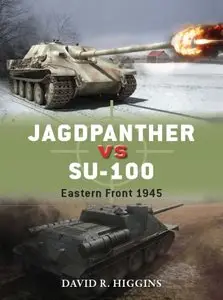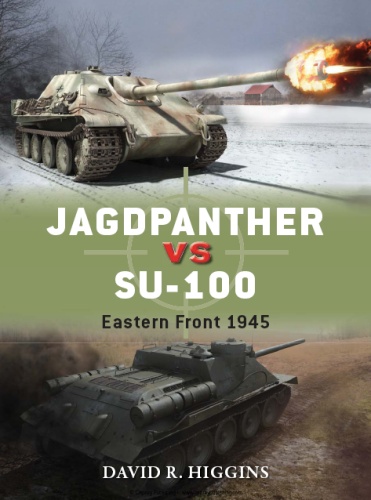David R. Higgins, "Jagdpanther vs SU-100: Eastern Front 1945 (Duel)"
ISBN: 1782002952 | 2014 | EPUB | 80 pages | 14 MB
The culmination of big-gun German and Soviet tank destroyer design can be found in their clashes in Hungary in the spring of 1945.
As World War II in Europe reached its end, armor development and doctrine had experienced several years of massively accelerated change, especially within the crucible of the Eastern Front. The German Jagdpanther and Soviet SU-100, both turretless tank destroyer designs based on a 'traditional' turret-tank chassis, were the culminating examples of how the progression of experience, resources and time constraints produced vehicles that were well suited for roles of defence and offence, respectively. The Jagdpanther represented a well-balanced solution and an excellent use of limited resources, while the SU-100 was a natural progression of the rudimentary but numerous SU-85.
As the role of tanks broadened from essentially infantry support to anti-tank, armor thickness and armament increased to enable AFVs better to survive such encounters. Expensive and hard to upgrade with larger armament owing to the constraints imposed by turret-ring size and suspension, turreted tanks gave way in some contexts to new designs. The Soviets and the Germans alike found that more powerful guns could be installed directly into the hull, which in turn reduced the vehicle's silhouette, and allowed for increased armour protection for the weight. A rapid arms race resulted in the East with each side attempting to develop a battlefield edge, if only for a limited time.
For the Germans the 8.8cm-armed Jagdpanther was intended for more defensive roles, such as ambushing or flank protection at long range where its superior sights and high-velocity rounds imparted an advantage. Its sloped armor and relatively light weight meant, unlike the more massive (and less practical) Jagdtiger (a Tiger II derivative), it could also operate in a more mobile capacity. Its superior optics offered key firepower advantages, but its origins in the overengineered Panther design meant it was susceptible to breakdown and mechanical problems.
In contrast, the closest Soviet equivalent, the SU-100, was designed to operate alongside armor and mechanized forces in an offensive capacity, where its 100mm main gun would help counter heavier enemy armour when encountered. Although its speed and armour protection were comparable, the greater numbers fielded late in the war often proved decisive against an adversary increasingly forced to fight despite inadequate logistics and training. By this stage of the conflict, the Germans were forced to adopt ad hoc battle groups to coordinate their decimated parent formations' assets. The Soviets in turn possessed operational momentum, and were perhaps less concerned with tactical losses, in part as immobilized vehicles could be more easily recovered and reintroduced into combat.



